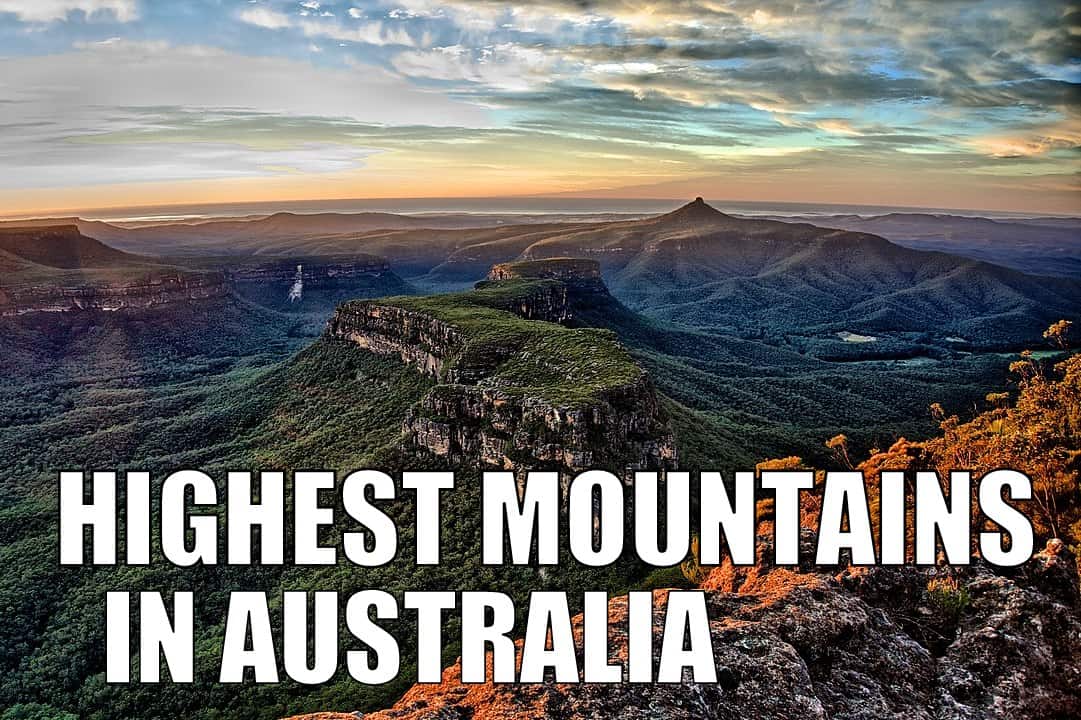
Australia is the sixth largest country in the world by land mass with an area of 2.9 million square miles. Its geography, while renowned for its expansive Outback, stunning coastlines, and diverse ecosystems, isn’t typically associated with tall mountains.
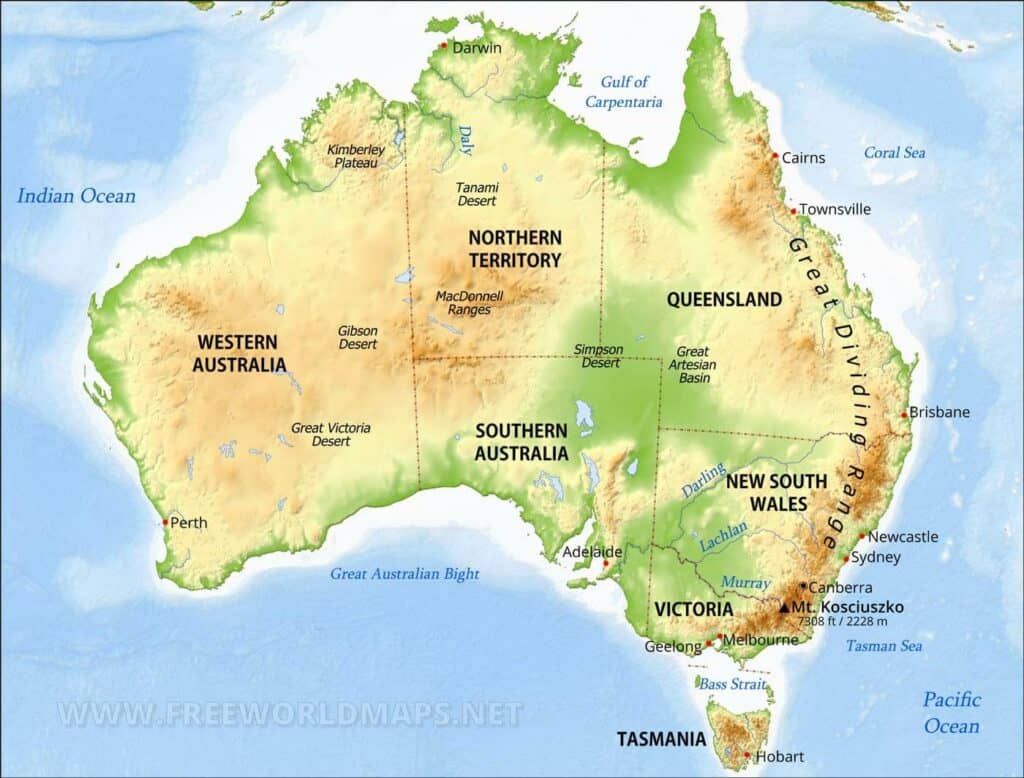
The Great Dividing Range, also known as the East Australian Cordillera or the Eastern Highlands, is Australia’s most extensive mountain range. It dominates the landscape, stretching along the eastern coast for approximately 2,175 miles (3,500 kilometers). These mountains formed millions of years ago due to tectonic movements.
Despite its vast length, the peaks within this range don’t reach the extreme heights commonly associated with mountain ranges elsewhere. The highest points are more accurately described as “high country” or elevated plateaus rather than towering peaks.
Here are Australia’s highest mountains:
- Mount Kosciuszko: 7,310 feet (2,228 meters), New South Wales
- Mount Townsend: 7,247 feet (2,209 meters), New South Wales
- Mount Twynam: 7,204 feet (2,196 meters), New South Wales
- Rams Head: 7,185 feet (2,190 meters), New South Wales
- Unnamed Peak near Etheridge Range: 7,119 feet (2,170 meters), Queensland
- Alice Rawson Peak: 7,086 feet (2,160 meters), New South Wales
- Byatts Camp (Mount Du Faur): 7,084 feet (2,159 meters), New South Wales
- Abbott Peak (Mount Du Faur): 7,034 feet (2,144 meters), New South Wales
- Carruthers Peak: 7,037 feet (2,145 meters), New South Wales
- Tension Woods Knoll: 7,008 feet (2,136 meters), New South Wales
The Tallest Mountains in Australia
1. Mount Kosciuszko (7,310 feet / 2,228 meters)
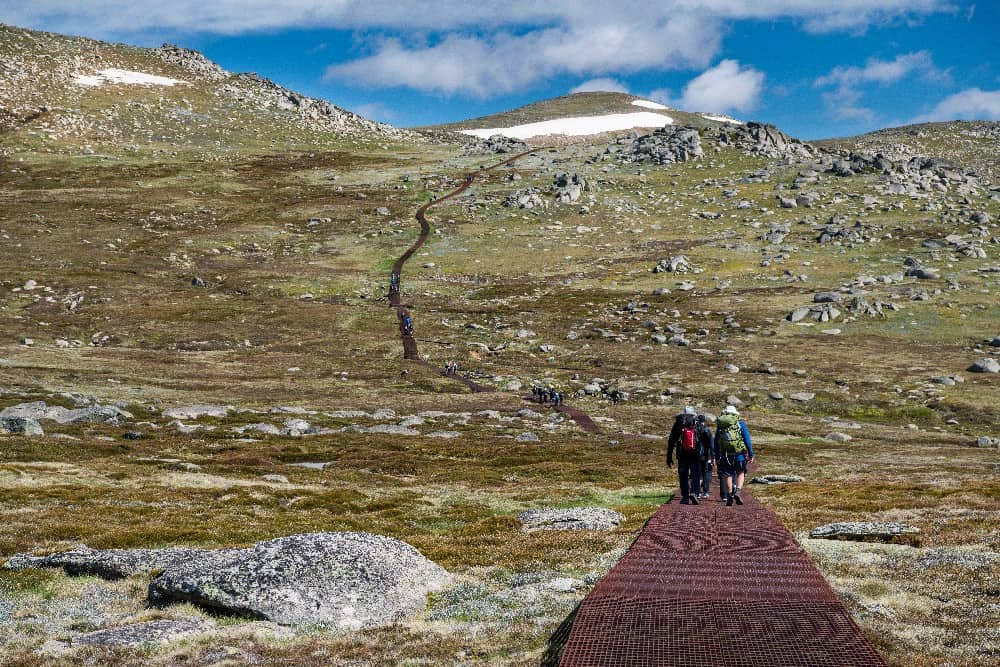
Mount Kosciuszko is the highest peak in Australia.
Located in the Snowy Mountains of New South Wales, the summit offers panoramic views of the surrounding alpine landscapes, featuring glacial lakes, snow gums, and unique flora. Renowned for its hiking trails and accessibility, visitors can explore its slopes and meadows during the warmer months, making it a popular destination within the Kosciuszko National Park.
The mountain was named after Polish cultural and political hero Tadeusz Kosciuszko.
Interestingly, Mount Kosciuszko and the second highest peak on this list, Mount Townsend, switched names in the late 19th Century. A survey found that the original Kosciuszko (now Townsend) was lower than the original Townsend (now Kosciuszko). The Australian authorities wanted to keep the name of Kosciuszko as their highest peak, so in 1892 the names of the two peaks were swapped.
2. Mount Townsend (7,247 feet / 2,209 meters)
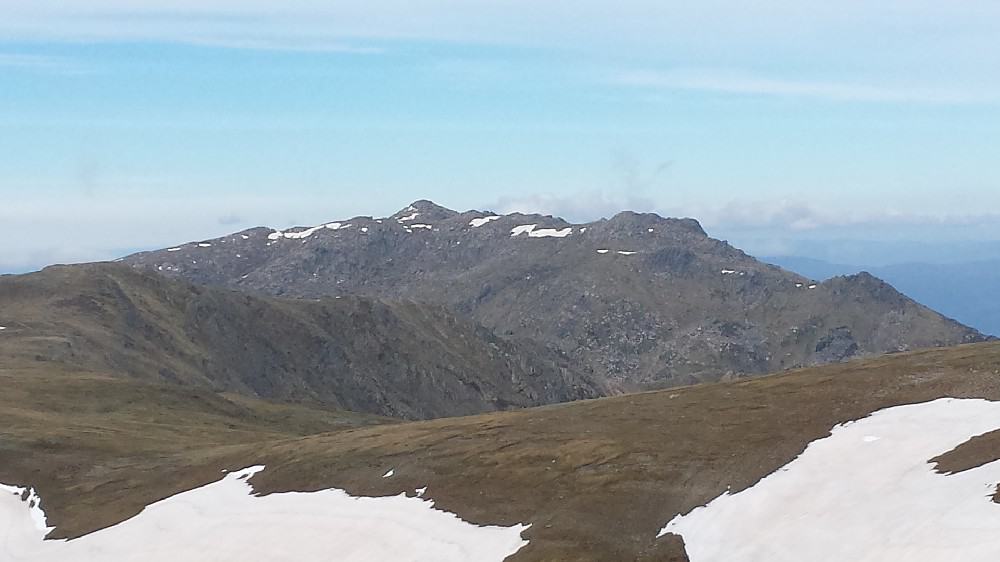
Adjacent to Mount Kosciuszko, Mount Townsend is Australia’s second highest peak. On another continent, Townsend would not be considered a separate peak but a subsidiary due to its low prominence. However, given Australia’s flatter terrain, the conventional 300-meter prominence cut-off is not applied here.
3. Mount Twynam (7,204 feet / 2,196 meters)
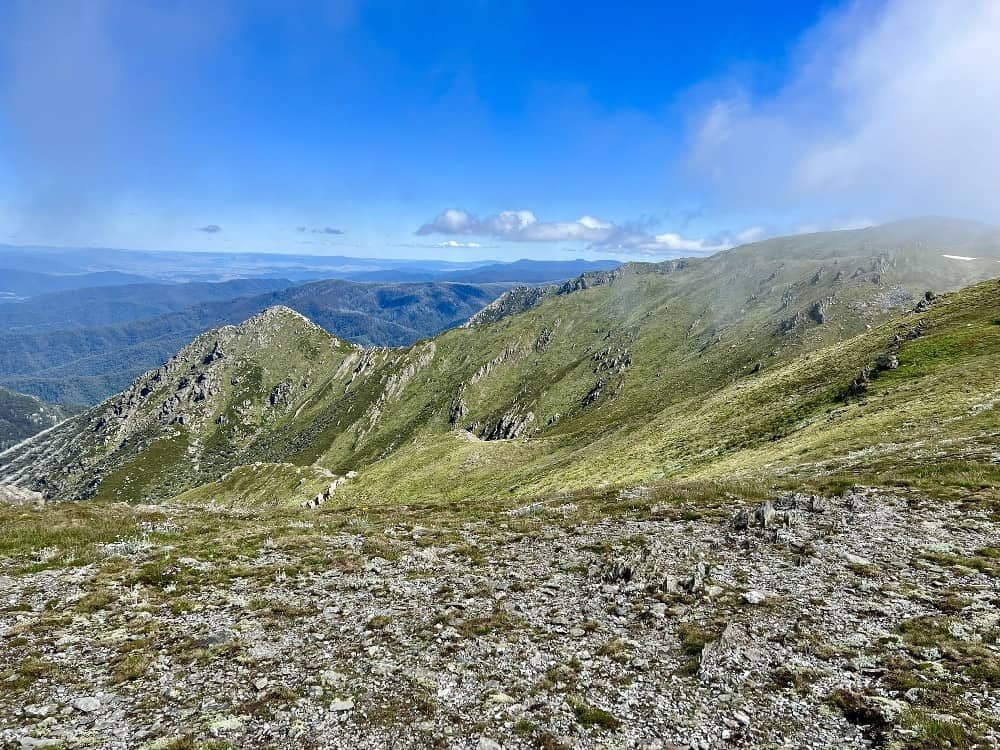
Mount Twynam presents itself as one of Australia’s prominent peaks. While slightly lower in altitude than Mount Kosciuszko and Mount Townsend, Mount Twynam remains a popular destination for outdoor enthusiasts exploring the high country. It is located close to the border of New South Wales and Victoria and has a spectacular view over Blue Lake Cirque and the Western Falls.
4. Rams Head (7,185 feet / 2,190 meters)
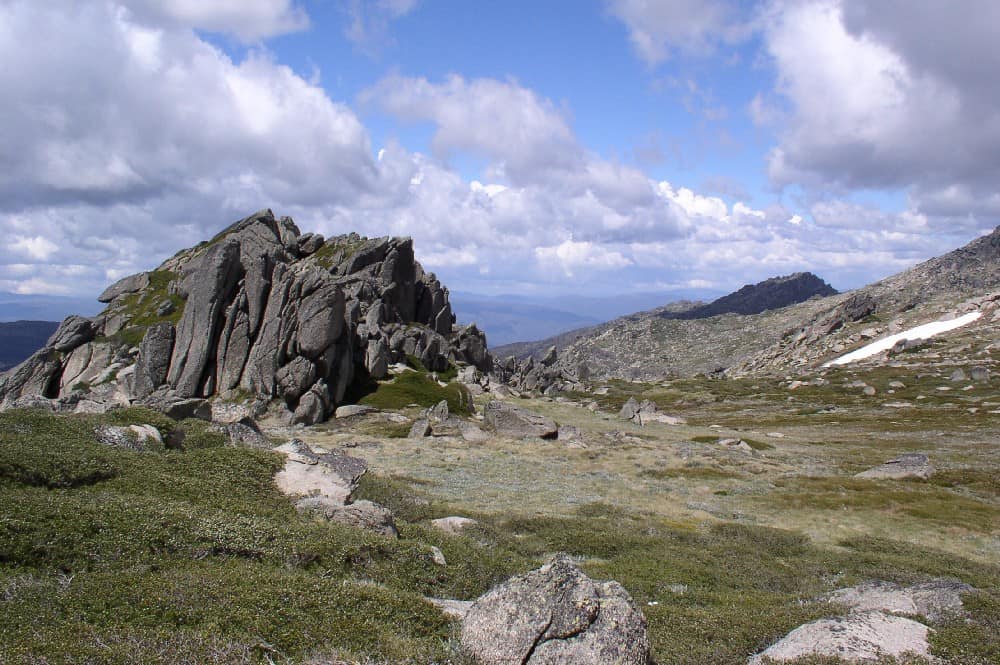
Comprising several peaks, including Rams Head North and Rams Head South, the Rams Head region is part of the Snowy Mountains landscape and part of Kosciuszko National Park. These peaks offer a rugged and diverse terrain, featuring stunning rock formations and expansive alpine vistas.
5. Unnamed Peak near Etheridge Range (7,119 feet / 2,170 meters)
While its name remains unknown, this peak, forms part of the Etheridge Range in Queensland. Situated in a remote and less-explored area, this unnamed peak showcases the diversity of Australia’s mountainous landscapes. Its rugged and pristine nature invites those seeking off-the-beaten-path adventures to explore its scenic wilderness and rugged beauty.
Australia’s Next Highest Peaks
6. Alice Rawson Peak (7,086 feet / 2,160 meters)
7. Byatts Camp (Mount Du Faur) (7,084 feet / 2,159 meters)
8. Abbott Peak (Mount Du Faur) (7,034 feet / 2,144 meters)
9. Carruthers Peak (7,037 feet / 2,145 meters)
10. Tension Woods Knoll (7,008 feet / 2,136 meters)
Comparison to Climbing Kilimanjaro
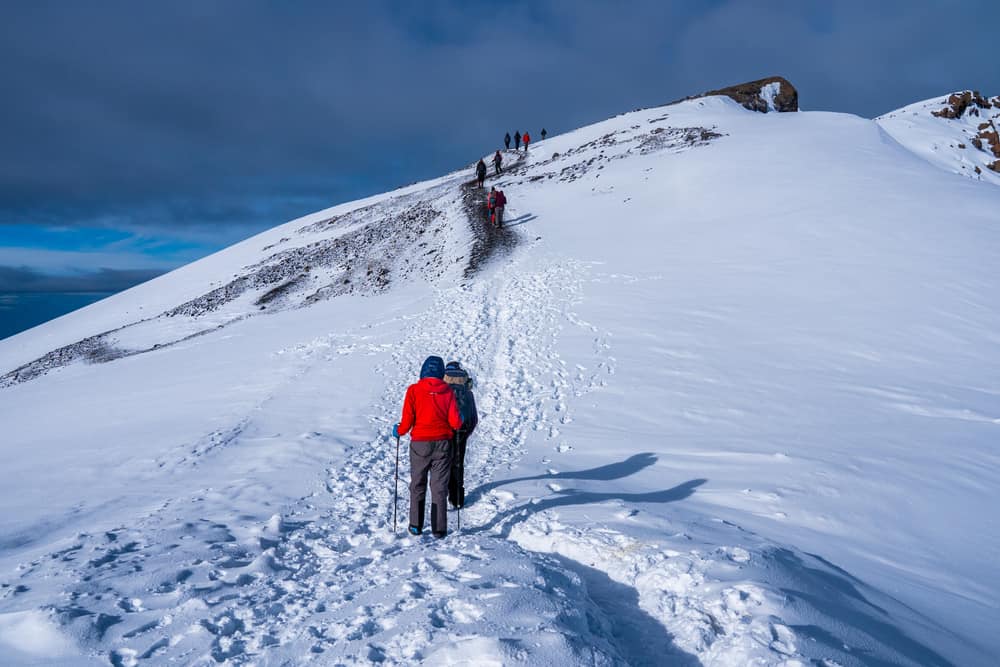
Australia’s highest peaks, including Mount Kosciuszko (7,310 feet / 2,228 meters) and Mount Townsend (7,247 feet / 2,209 meters), present a considerably lower altitude than Kilimanjaro. Mount Kilimanjaro, stands 19,341 feet (5,895 meters) above sea level, as Africa’s highest peak and a global icon for hikers.




























































